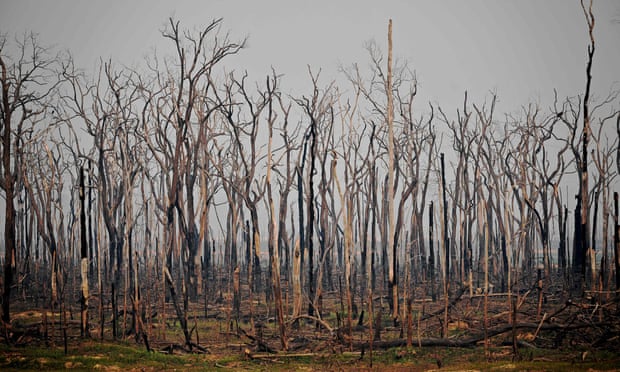Specialists call for 'misfortune and harm' reserve for nature in creating world
Our planet is experiencing unprecedented levels of environmental degradation, with ecosystems being destroyed at an alarming rate. While efforts to conserve nature have been made, the current approach is often insufficient to counter the magnitude of the challenges we face. The call for a 'misfortune and harm' reserve stems from the recognition that existing conservation strategies have not effectively addressed the pressing issues affecting developing countries.
Current state of nature preservation efforts
Despite the global acknowledgment of the importance of nature preservation, significant gaps remain in terms of funding and prioritization. Developing countries, in particular, often struggle to allocate sufficient resources for conservation initiatives. This lack of financial support hampers their ability to safeguard their natural heritage and leaves them vulnerable to irreversible losses.
The concept of 'misfortune and harm' reserve
A 'misfortune and harm' reserve represents a paradigm shift in nature preservation. It recognizes that, in the developing world, the impacts of environmental degradation and biodiversity loss are often more profound and have far-reaching consequences for communities. The reserve is designed to address the misfortunes and harms inflicted upon nature, as well as the associated social and economic consequences.
Examples from developed countries
Several developed countries have already implemented variations of a 'misfortune and harm' reserve. These countries recognize that protecting nature is not only a moral imperative but also crucial for ensuring sustainable development and the well-being of their citizens. By prioritizing the restoration and preservation of ecosystems, they have managed to strike a balance between economic growth and environmental conservation.
The need for a 'misfortune and harm' reserve in developing countries
Developing countries face unique challenges in preserving their natural resources. They often encounter barriers such as limited funding, competing developmental priorities, and weak institutional frameworks. A 'misfortune and harm' reserve specifically tailored to these countries can help overcome these challenges and provide a platform for long-term environmental sustainability.
Challenges faced by developing countries
Unlike their developed counterparts, developing countries are frequently confronted with poverty, population growth, and limited infrastructure. These factors create additional pressures on the environment and exacerbate the loss of biodiversity. Without targeted intervention, the consequences can be devastating, including the loss of vital ecosystem services and the displacement of vulnerable communities.
Benefits of a reserve
Establishing a 'misfortune and harm' reserve in developing countries would bring numerous benefits. Firstly, it would help protect and restore critical habitats, safeguarding the biodiversity that sustains both ecosystems and human livelihoods. Secondly, it would contribute to climate change mitigation and adaptation efforts, as healthy ecosystems play a crucial role in sequestering carbon and regulating local climates. Lastly, a reserve would provide a platform for sustainable tourism, generating economic opportunities while preserving natural resources.
Strategies to establish a 'misfortune and harm' reserve
Creating a 'misfortune and harm' reserve requires collaboration between governments, non-governmental organizations (NGOs), and local communities. These stakeholders must work together to develop comprehensive conservation strategies that address the specific needs and challenges of each region. Additionally, innovative fundraising and financial mechanisms need to be explored to ensure the long-term sustainability of the reserve.
Case studies of successful 'misfortune and harm' reserves
Several case studies provide valuable insights into the implementation of 'misfortune and harm' reserves. One notable example is Costa Rica's Payment for Ecosystem Services program, which compensates landowners for the preservation of forests and other ecosystems. This initiative has successfully transformed the economic value of nature, incentivizing conservation efforts and contributing to the country's sustainable development. Another inspiring case is Bhutan's Gross National Happiness index, which measures the well-being of its citizens based on sustainable development indicators rather than solely focusing on economic growth.
Potential objections and counterarguments
Implementing a 'misfortune and harm' reserve may face potential objections. Some may argue that prioritizing conservation efforts could hinder economic growth and development. However, it is essential to recognize that environmental degradation poses long-term risks to economies and societies. By incorporating sustainable practices and valuing the benefits nature provides, countries can create a path towards both prosperity and ecological resilience.
Conclusion
Preserving nature in the developing world requires innovative and tailored approaches. A 'misfortune and harm' reserve presents a transformative concept that aims to address the urgent need for nature conservation. By prioritizing the establishment of such reserves and adopting sustainable practices, we can safeguard our planet's ecosystems, support local communities, and ensure a sustainable future for generations to come.





No comments: